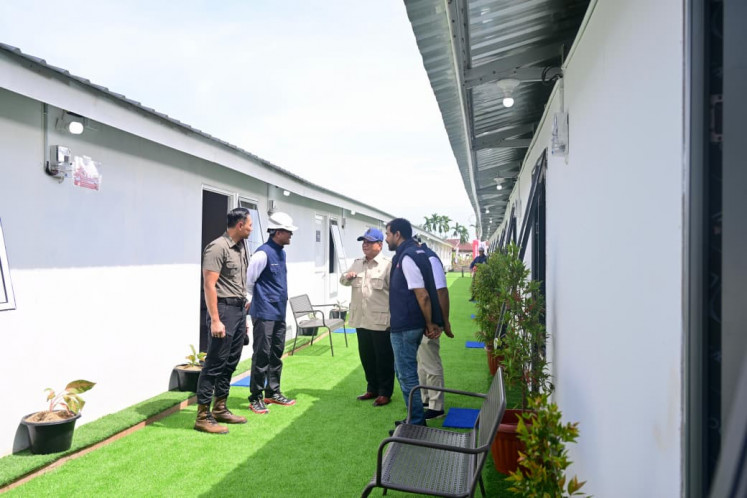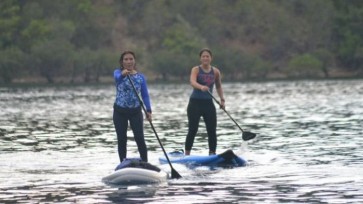Popular Reads
Top Results
Can't find what you're looking for?
View all search resultsPopular Reads
Top Results
Can't find what you're looking for?
View all search resultsRealizing the global maritime fulcrum policy
Six decades after the Djuanda Declaration, where is Indonesia in terms of ocean management?
Change text size
Gift Premium Articles
to Anyone
W
hat if former prime minister Djuanda did not declare on Dec. 13, 1957 that maritime space between Indonesian islands belongs to Indonesia? What if the international community did not accept Indonesia’s declaration? We should thank Djuanda Kartawidjaja for his bravery in making the unprecedented move and for the endurance of his team to fight for the international community’s acceptance of the declaration.
Six decades after the Djuanda Declaration, where is Indonesia in terms of ocean management? President Joko “Jokowi” Widodo introduced his vision to transform Indonesia into a global maritime fulcrum, or poros maritim dunia. When he first used the term in a presidential debate, most people were surprised, with many speculating about what it actually meant.
The establishment of the Office of the Coordinating Maritime Affairs Minister was the first official sign that Jokowi had a strong maritime vision. Furthermore, the appointment of Susi Pudjiastuti as the Maritime Affairs and Fisheries Minister has been seen by many as one of the best decisions Jokowi has made.
Susi does not do business as usual. Her unpopular policies included blowing up illegal fishing vessels in Indonesian waters.
At the World Ocean Day celebration in New York, Leonardo DiCaprio, an Oscar-winning actor, praised Susi and Indonesia for a number of success stories in ocean management.
What about Indonesia’s position on the South China Sea (SCS) dispute? On July 14, Indonesia issued a new map marking its maritime boundaries.
Compared to the 2015 version, the new map made significant changes in renaming Indonesia’s exclusive economic zone in the SCS as the North Natuna Sea. The North Natuna Sea is officially part of the SCS based on the S-23, an international document produced by the International Hydrographic Office on Toponymy. The latest version of the S-23 was agreed in 1953.


















